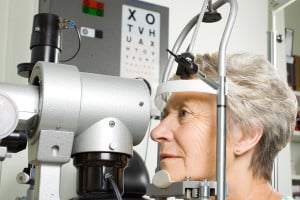Refractive Disorders
When light enters the eye it is bent, or refracted, by the cornea and the focal point is the back of the eye.
If the shape of the eye, the shape of the cornea, or the condition of the lens causes the light to refract improperly so that it does not focus on the back of the eye as it should, the condition is called a Refractive Disorder.


Refractive Disorders are among the most common vision problems.
Myopia
Also called “nearsightedness”, Myopia is the condition of not being able to focus on objects at a distance, even though nearby objects may be seen clearly — even without the aid of glasses. Myopia can vary by degrees from mild to severe.
Astigmatism
Any blurring of vision caused by a cornea that is oval shaped, rather than round, is called Astigmatism. Often found in conjunction with cases of myopia or hyperopia, astigmatism is the most common Refractive Disorder.
Hyperopia
Hyperopia, also called “farsightedness”, is the condition of not being able to focus clearly on objects at close range, though distant objects may be viewed easily without the aid of glasses. Hyperopia can also vary from mild to more extreme cases.
Presbyopia
Presbyopia literally means “old eye”. It’s a condition of reduced elasticity of the lens due to the normal aging process. This loss of elasticity affects the ability of the eye to focus on close objects.
